Peter Harrison discusses Seabirds: The New Identification Guide
Posted by Peter Harrison
in Of Interest
After 14 years dedicated to its completion, seabird expert, author, artist and Apex co-founder, Peter Harrison, is now just months away from the launch of his greatest work to date, Seabirds: The New Identification Guide. We caught up with Peter recently to get a sneak peek and learn more about his much-anticipated new book.
Q: How many seabird species can we expect to see in your new book?
Peter — My first book, written some 40 years ago, included 312 seabird species and it took 1,600 illustrations to depict them across 88 plates. My new book, Seabirds: The New Identification Guide, has a staggering 437 species and will have over 3,500 colored figures spread across 239 plates. The reason for this is that since the publication of my first book back in 1983, our understanding of seabirds and in particular their taxonomy has changed remarkably. And so too has our understanding of plumages and molt sequences. So, it’s a much larger book and much more expansive.
Q: Could you describe Seabirds: The New Identification Guide for us in a little more detail?
Peter —Well, first and foremost, I’m a big believer in books being user friendly. This book has been designed by a birder, for birders. Unlike many other modern field guides where many species are crammed onto a single plate (in other words, you might have 6, 7 or 8 species on a plate), in my new book, the plates are arranged so that most plates have only two species. You have a facing plate on the right-hand side with as many as 20 figures. And then opposite that plate, there’s the corresponding text and a colored map. So, at a glance, you have full color illustrations, a distribution map, and comprehensive text to see where the bird occurs, what its breeding biology is—in other words, when it lays its eggs—how to identify the bird, and what its confusion species are. It’s really a beautiful book, but also very user friendly.
Q: Your new book sounds like it’s been quite an ambitious undertaking. How long has it taken you to research, write and illustrate Seabirds: The New Identification Guide?
Peter —Well frankly, it has taken a lifetime. My life has been an epic adventure of research and travel across the oceans and the seas of the world to study seabirds, birds that live where all others can’t—the open ocean. My first book took 11 years to research, write, paint and then finally publish. But this book has actually taken longer. It’s so much more expansive.
When I worked up courage that yes, I was going to take on this new book, I didn’t quite realize how long it would take, but I was thinking about maybe 10 or 11 years. In fact, it’s now taken 14 years of dedication to produce the text and the artwork. So, by the time it’s printed and published, which will be later this year, it’s going to be around 15 years to actually have completed the book—all the research, all the design, the layouts, the text, and of course, the artwork. It’s the artwork that takes the most time.
Q: Will you describe for us the process of creating a plate?
Peter — This is huge actually. The plates are the soul of the book, there’s no question about that. First off, you need to choose what you’re going to be painting and how complicated it is, the species that is. So, in an average seabird, you will want your plate to depict two species—birds that are similar in color or pattern or plumage, or maybe a close relative. For example, a King Penguin and an Emperor Penguin look similar and they’re both large penguins. Or, a Cape Petrel and an Antarctic Petrel—they’re both fulmarine petrels, they’re both similar sizes, they both have absolutely diagnostic plumage patterns and that’s what you want to show. If it’s a complicated bird, like a gull or an albatross, you will only show one species because you have so many different plumages. It may come as a surprise, but in some albatrosses, it takes over 20 years to attain full adult plumage, and during those 20 years, they are constantly, albeit slowly, changing. And gulls—a bird that takes 4 years to reach adult plumage—have 7, 8 or 9 different plumages. So, you have to do your homework very carefully and work out how many plumages you need.
And then comes the fun stage, which is to sketch outlines that hopefully capture the essence of the bird, how it looks at long distance, how it looks when it’s close to you, whether it’s standing, sitting, swimming, or flying. All of those things come into play. Then you take all those sketches—and this is the hard part—and get them to fit on your plate. You may spend 3 days sketching, have everything more or less the right size you think. Then, when you try to put them together on the half plate or the full plate, they just don’t fit. So, everything now has to reduce by 10 percent or 12 percent and you have to start again.
But once you’ve got your figures set out on the plate, you then transfer them to your finished canvas, which is the watercolor board. Then you start one by one drawing out and then painting in figure by figure by figure. This can take some time obviously. Most of my figures take me one hour to complete, two at the most.
So, having done all that, on average, from start to finish, a plate will take about two weeks. That’s about 50 hours a week or 100 hours of work from start to finish. With 239 full color plates in the book, it’s little wonder that the book has taken about 15 years to complete.
Q: Why are illustrations preferable to photography?
Peter — Photographic guides have their place in the world, but they’re not ever as good as when a bird is drawn by an artist. My aim always is to bring the bird to life. If you are a bird artist and you spend your time in the field, you know your birds. You can sketch in the movement, the feel, the gestalt, the general impression and shape of a bird. Has it got a careening flight like a Shearwater, is it slow and laborious like a Pelican, is it dainty and dashing going from wave top to wave top like a butterfly in an August garden? All of these things you try to capture as an artist and this is what makes a drawn and painted figure so much better than just a single photographic image.
Q: Have you seen all 437 species of seabirds in the field?
Peter — Believe it or not, I have only one yet to see, and that species is the Chinese Crested Tern. It’s a bird that was thought to be extinct and then made a comeback as sometimes birds do. It is my firm intention next year, in 2021, to go and see the Chinese Crested Tern.
Q: Some might consider this book an expression of your life’s work. Would you agree?
Peter — Yes, wholeheartedly. My whole adult life has been dedicated to the study of seabirds, and yet we still know so little about their lives. This is the driving force behind the book. It’s also a chance to leave what I call a legacy project. In my family, the book is known as Project Legacy. And it’s my way of leaving as much of my research that I’ve been able to do for others that follow. And there’s no doubt that seabirds are a hot topic in birding today, one of the great frontiers in Ornithology, the study of oceanic birds.
Q: When will Seabirds: The New Identification Guide be published?
Peter — As we say in the business, the book is in press. In other words, it is being put together as we speak. We print a few more pages each day. But, with over 600 pages, 239 of which are full color plates with over 3,500 illustrations, this takes some time to put together. We hope to have this on the bookshelves by December at the latest. And the official launch will be in January of 2021.
I will be very pleased when the project is over, I can tell you that. It’s been a labor of love and it’s what has made me who I am, the study of seabirds. It’s all exciting and all good, but I’ll be glad when it’s over. I want to go fishing!

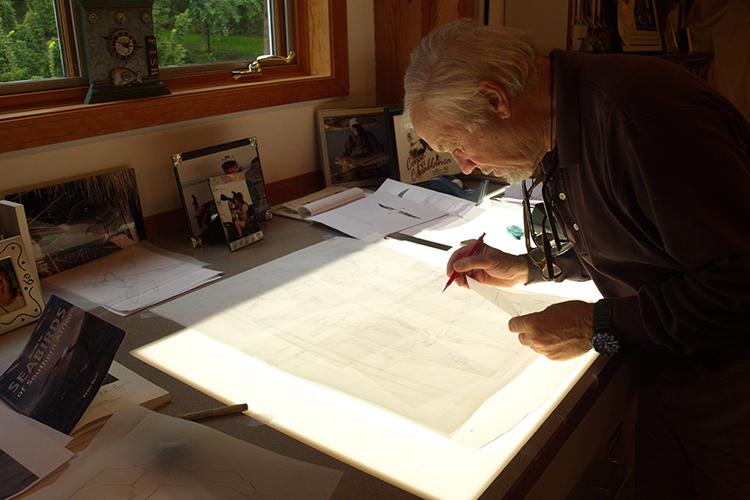
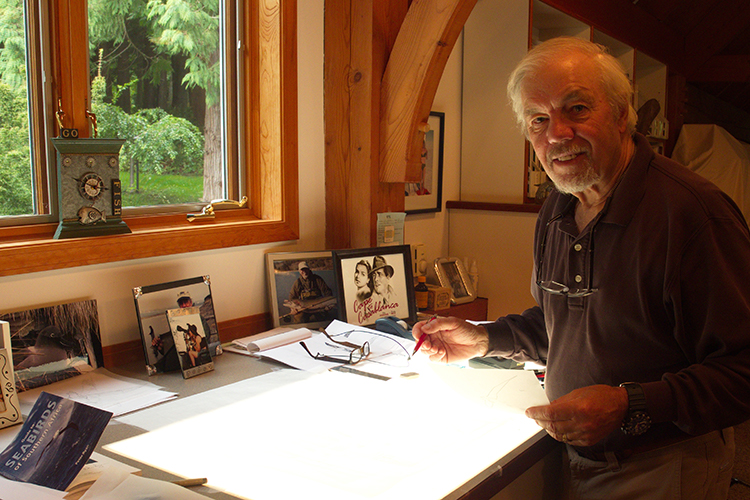
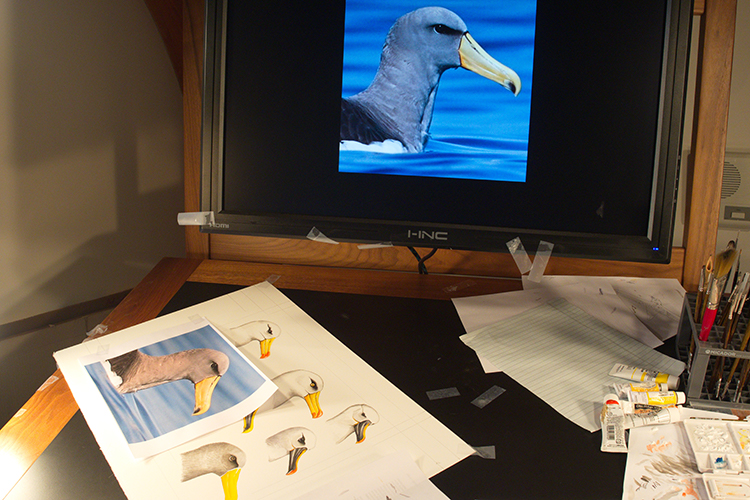
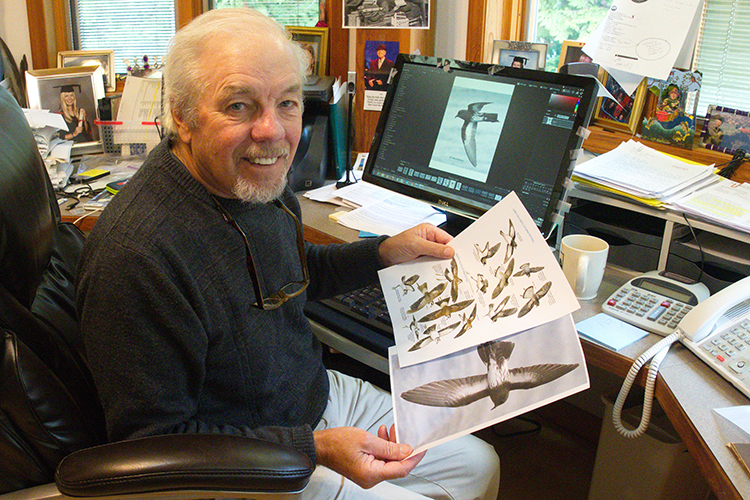
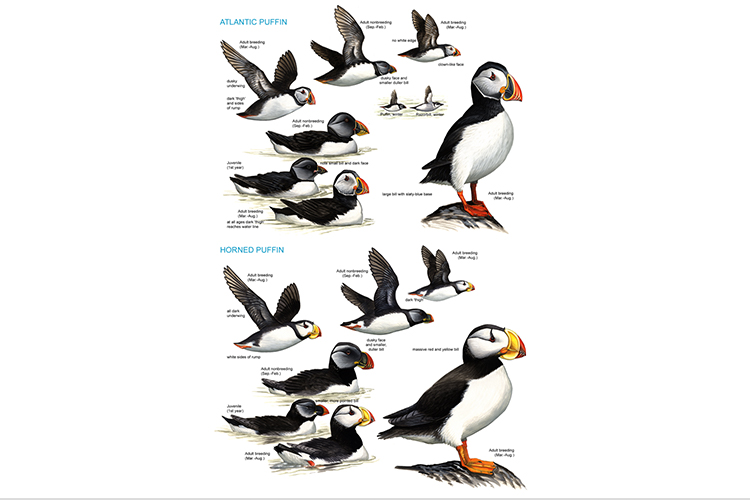
We have Peter’s first book for many years. Where can we purchase his new book which we have been eagerly awaiting?
I can’t wait to see it and buy it, Peter. It has been a long time since we have seen you, but I am ever hopeful that we can travel again with you.
Great & Classic Legacy.
Good gracious, Peter. I’ve been holding on for all these years since my first Zegrahm adventure with you awaiting the publication of the marvelous work. Lord willing, I’ll plan to hold on for at least another 9 months until your promised publication date. Just kidding – I plan to be around a lot longer than that to look forward to traveling with you and Shirley again.
Well done Peter. We are really looking forward to seeing your book.
Love to you and Shirley. John and Celia, in self isolation in England!
Jane and I send you and Shirley our love and best wishes. We hope you are staying well and enjoying a little down time. We are looking forward to seeing your new book, since your current one is getting a little dog eared around here in southwest Florida.
Would love to catch up with the two of you sometime soon.
No doubt it will be wonderful. Congratulations Peter
Looking forward to seeing your book. It has been such a pleasure and special treat to travel with you. Looking forward to doing more once sanity returns to this world. Love to you and Shirley and a special hello to Jonathan and Kevin.
Waiting for it Peter. So happy for you and Shirley as it nears publication.
Congratulations on your outstanding, World-Class accomplishment.
Please take your place on the Medal Stand, and in the middle.
Your attention to detail and all of the wonderful things you have taught this city-boy photographer are truly priceless.
Perhaps, best of all, your knowledge and insight will be passed to the next generations!
Peter, Congratulations on your new book. Hope to see you and Shirley on a new trip! John and Ellie Fogarty
Congratulations to you and Shirley and to Jonathan, Kevin and Ingrid from our memories of the trip of a lifetime. We are sure the medal will be platinum. Will see you again when the current dust settles. Kudos from the Beswicks, Vanderweidens and Blacks.
It will be so awesome to page through this legacy. Can’t wait to own it and show it off to my friends and neighbors. What an incredible undertaking!!! Thank you Peter and to Shirley no doubt a tremendous help. Hugs to you both.
Congratulation! Sharon has just asked me about the progress of your big project a few weeks ago!
We look forward to penguin encounters together again with you and Shirley.
-J&S from Hong Kong
Congratulations Peter. This was a work in progress when we had the pleasure of your knowledge and company on a trip to Antarctica in 2009. So many wonderful bird sightings from Cobbs Wren in the Falklands to nesting Lesser Snow Petrels which we found with you in a cave having scrambled up a steep escarpment on the Antarctic Peninsula. We ended our trip in Chile when we had a fly past of Inca Terns. The next challenge is to find the slender billed curlew and the ivory billed woodpecker.
Kindest regards to Shirley.
Can not wait to meet you and Shirley and to purchase this new amazing book.
Thank you for all your efforts to put this work of love together.
Congratulations: will order copies of the book as soon as it is available. We have not nearly enough seabirds in South Dakota….Very pleased to read the good news – and wishing you and Shirley well during this strange world occurrence.
Greetings Peter. We’re really looking forward to getting a copy, and to travelling with you again to see some of these wonderful and amazing creatures. Best Wishes to you and Shirley, and to the rest of the Apex gang. Stay safe.
Looking forward to our copy!! Enjoyed meeting you and Shirley and look forward to more adventures in the future. Might be hard to top the Great Ice Floe Escape episode in January 2019 in Antarctica!!
Jim and Jill
Minneapolis, Minnesota
Congratulations on the completion of your book Peter. We have enjoyed every trip we have gone on with you and Shirley. Will we be able to purchase the book in Canada? Would love to have an autographed copy for ourselves. Best wishes to you and Shirley from Les and myself in cold Alberta.
The first time my husband Bill and I saw Peter paint a seabird was on the little red ship in Antarctica in 1990. We were captivated. Now, 30 years on, I am looking forward to this new masterpiece, full of years of knowledge and insight. Can’t wait! Bravo, Peter!
I miss traveling with you. Maybe in the near future, I will be able to travel with you and Shirley. I truly enjoyed traveling the Zegrahm trips with both of you. Peter and Shirley presented the most wonderful trips to travel.
Please send me a copy of your book. I am really looking forward to receiving the copy, please autograph my copy. I will enjoy your new masterpiece: drawing of birds and the information you present. This will be extra special and beautiful book for me. Hope to travel with you in the future, again. Thanks for sending. Mary Denny
Thank you for the beautiful trips I traveled with you.
Hi Peter. Sure missed our trip going from Valparaiso to Tahiti. Glad to be at home and safe. Hope this lockdown gives you the time to finish your book. Keeping our fingers crossed that we can travel in June. hope to see you soon.
Congratulations!!!! We are very happy to learn about your new book and would like to add this version to the autographed first one we got from you. Our most memorable trips with you and Shirley were two times to the sub-Antarctic Island of New Zealand. We hope to see you again on a future trip and all the best to you.
Gabrielle & Michel Therin-Weise (Belgium, but now living in Portugal)